The Nuclear Science and Security Consortium Webinar Series aims to inform academic audiences on the technical and policy aspects of the nuclear security and proliferation detection mission. Through the series, laboratory scientists and policy practitioners are invited to NSSC partner academic institutions to present on their work. The webinars are broadcast live to the NSSC community, allowing students, faculty, and scientists at partner institutions to watch in real-time and engage in the discussion. Recorded webinars are also hosted on the NSSC website (see below). Students attending the webinars in-person have the prospect to meet with visiting scientists and professionals to discuss research and professional development opportunities. On several occasions, one-on-one meetings between students and scientists have been set up in conjunction with the webinar event.
Most events are held on the University of California, Berkeley campus and broadcast to our partner institutions. Recordings of past webinars are available below:

If you or someone you know would be interested in presenting a webinar contact nssc_info@berkeley.edu
A Multimodal-Deep Learning System for Monitoring Nuclear Proliferation Activities Using Open Sources
Yana Feldman, Nonproliferation and International Safeguards Analyst, Lawrence Livermore National Laboratory
October 30, 2019, 12:00 – 1:00 pm PST (Register here)
UC Berkeley, Sutardja Dai Hall: Banatao Auditorium
Live broadcast here.
About the talk: As the amount of available data increases, the human ability to locate, process, and analyze it is strained and eventually overwhelmed. To address this challenge for nonproliferation analysts, Feldman’s team has been designing a large-scale multimodal retrieval system to help analysts triage and search open-source science, technology, transaction, and news data for indicators of nuclear proliferation capabilities and activities. Their system relies on a set of deep neural networks (DNNs) trained to evaluate conceptual similarities across data modalities, for example, text, image, and video. These DNNs can be used to search and prioritize data, according to a nuclear fuel cycle (NFC) process template, that are conceptually closest to the seed query items regardless of data modality. The team evaluates the system’s ability to retrieve NFC-related data that have been purposely hidden in collections of unrelated background data. Quantitative and qualitative results for text-to-image, image-to-image, and image-to-video retrievals are demonstrated.
About the Speaker: Feldman is a Nonproliferation and International Safeguards Analyst at Lawrence Livermore National Laboratory (LLNL), where she performs analysis to support the National Nuclear Security Administration and other sponsors in assessing international nuclear security problems, formulating policy options, and implementing nonproliferation initiatives. Prior to joining LLNL, she worked as a Safeguards Information Analyst in the Department of Safeguards at the International Atomic Energy Agency, focusing on open-source information analysis in support of drawing credible conclusions about states’ compliance with international safeguards obligations. She holds a BS in chemistry from UC Berkeley and a MS in international relations from the London School of Economics.
The Single Volume Camera Project Overview
Melinda Sweany, R&D Technical Staff (Physics): Radiation & Nuclear Detection Systems at Sandia National Laboratory
October 21, 2019 (this talk will not be broadcast)
Event co-hosted with the Department of Nuclear Engineering at the University of California, Berkeley
Abstract: The Single Volume Scatter Camera (SVSC) Collaboration is multi-institution effort lead by Sandia National Laboratories to develop portable neutron imaging systems for a variety of applications in non-proliferation and arms control. Current state-of-the-art kinematic neutron imaging systems consist of distributed scintillator volumes in which the position, time, and energy of multiple interactions are used to reconstruct a neutron’s incoming direction. Such systems suffer from poor geometrical efficiency and are ultimately limited in performance by the size of the individual scintillator cells. The SVSC project aims to improve the geometrical efficiency by up to an order magnitude by reconstructing multiple neutron interactions within the same scintillator volume. The concept, overall program goals, and current progress up to date will be presented.
Bio: Melinda Sweany is staff member at Sandia National Laboratories in Livermore, California. She received her Ph.D in physics from the University of California at Davis in 2011, specializing in experimental particle physics. Over the last ten years, she has participated in the research and development of a variety of detection methods and systems for the search and characterization of radiological material, including: border monitoring with a water-based neutron detector, neutrino detection for reactor monitoring, source localization using neutron emissions with double-scatter imaging, and neutron imaging with coded aperture techniques. Her recent work includes detector development for the optically-segmented Single Volume Scatter Camera and Silicon Photomultiplier readout of scintillator-based detection system.
When to hold it, when to fold it, when to play it right
Lalah Shayesteh & Kate Lewis
February 4th, 2019 4:00 – 5:00 pm PST
This talk will give an overview of intellectual property and discuss the different types of IP that the University licenses to external partners. We will also give an overview of industry sponsored research (and how it differs from federal funding) and talk about the rights Berkeley offers to research sponsors (and why). We will share University resources and contacts for questions, invention disclosures, and software. We will also discuss the general process for patent protection, options for open source licensing, and issues that can arise with accepting software, data, or materials from external partners.
Presented by:
Lalah Shayesteh, Senior Licensing Officer, Office of Technology Licensing
Laleh is Senior Licensing Officer at UC Berkeley’s Office of Technology Licensing where she develops IP strategy and oversees licensing for life sciences, chemistry, medical instruments, physical sciences, engineering, and software technologies. Additionally, she handles trademark and copyright matters, open source compliance, and government grant and contract IP matters. Laleh is a trained scientist and worked for several years in research before practicing law. Prior to joining UC Berkeley, she performed population genetics research at Stanford, pediatric brain tumor research and ovarian cancer research at UCSF, brain tumor research at University of Chicago, and comparative genomics research at Exelixis. She then embarked on a law career and became a patent agent at Exelixis, followed by a director of IP and assistant general counsel for IP matters at SRI. Laleh holds a Ph.D. in Biophysics from UC San Francisco and a J.D. from Concord Law School. She is a member of California State Bar and is also registered to practice before the US Patent and Trademark Office.
Kate Lewis, Associate Director, Industry Alliances Office
Kate Lewis is an Associate Director in the Industry Alliances Office at UC Berkeley. She has been at UC Berkeley for more than 13 years ago spent time in the Berkeley Seismological Laboratory and Sponsored Projects Office prior to joining the Industry Alliances Office. She focuses on business development with industry partners, facilitating sponsored research between companies and faulty, negotiating industry contracts, and in-licensing in the Industry Alliances Office. Kate received her Bachelors and Masters degrees in Sociology and is an active participant in the Industry Contract Officers Network and the Society for Research Administrators. In her spare time, Kate enjoys spending time with her family, gardening, traveling, and cooking.
Can Nuclear Power Help Solve Climate Change? “A Bright Future” Book Release Event
Staffan Qvist & Joshua Goldstein
January 18, 2019 – 12 – 1:00 PM
3110 Etcheverry Hall, UC Berkeley
Broadcast live: https://berkeley.zoom.us/j/607328980
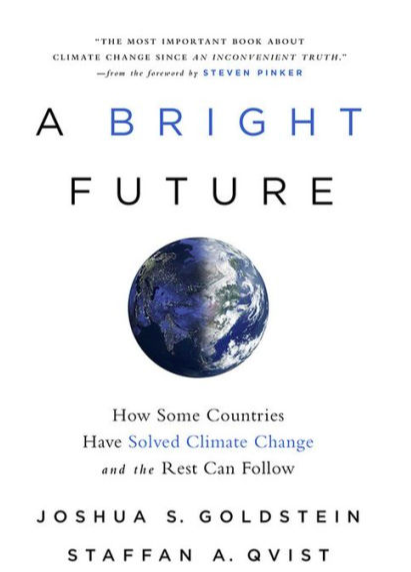
“A Bright Future” is a book co-authored by Staffan Qvist and Joshua Goldstein, which discusses the role of nuclear power in solving climate change. Staffan is a UCBNE alumnus, and Joshua is a professor emeritus at American University.
Is There A Light At The End Of The North Korean Nuclear Tunnel?
Siegfried S. Hecker
November 15, 2018 – 4:00pm-5:30pm
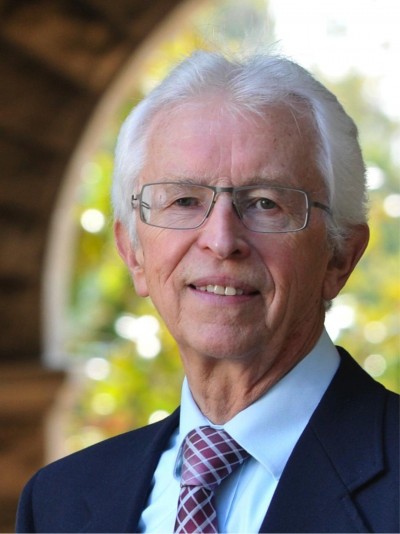
After a disastrous and dangerous 2017, diplomatic initiatives have opened a window for resolution of the North Korean nuclear crisis. But will the Trump administration’s diplomacy succeed or fail as have all attempts over the past 25 years? I will offer my perspective based on seven visits to North Korea and our comprehensive study of North Korea’s nuclear program.
Nuclear Forensics and What it Can Tell Us about Materials from the Front End of the Uranium Fuel Cycle
Dr. Naomi Marks
October 29th, 2018 4:00 – 5:00 PST pm in Etcheverry Hall 3105, UC Berkeley
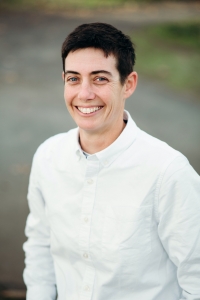
The illicit trafficking of radioactive and nuclear materials has been the subject of increasing concern in the international community over the past decade. These materials are problematic because of their radiotoxicity, and have been lately discovered in settings ranging from contaminated scrap metal to Am-241-laced gambling dice. The trafficking of nuclear materials poses a greater concern, as these materials pose a proliferation risk if they are diverted and escape regulatory control. Nuclear forensic signatures can help to elucidate the origin of a material, and are also relevant for assessing the consistency of a state’s declarations. In this talk I will describe case studies and research on elemental and isotopic signatures that can be used to address questions of nuclear forensic interest.
Naomi Marks is a researcher in nuclear forensics at Lawrence Livermore National Laboratory (LLNL) with expertise in thermal ionization mass spectrometry and electron probe microanalysis, including applications to nuclear forensics; as well as expertise in U mining and milling; isotopic and chemical evolution of early solar system materials; and international nuclear forensics engagements. She is serves as developer and designer for the NNSA and IAEA Nuclear Forensics training courses and has traveled to more than a dozen countries in support of nuclear forensics cooperation engagements. Naomi’s current research focuses on identifying geochemical signatures in materials from the early part of the uranium fuel cycle and on developing nuclear forensics libraries.
Plutonium Contamination of the Environment: What’s the Problem?
Dr. Mavrik Zavarin
April 24th, 2018 12:00 – 1:00 pm in Etcheverry Hall 4101, UC Berkeley
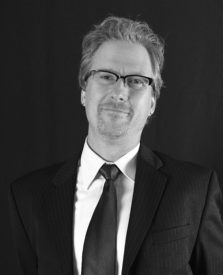
Over the past 75 years, the global inventory of plutonium on earth has increased by a factor of approximately 10 6 . A fraction of this plutonium inventory has been released into the environment and can be identified in sediments, rock and glacial ice. As a result, plutonium environmental chemistry has gained sincere interest both in the public and scientific communities. Plutonium aquatic chemistry, mineral/water interface reactions, interaction with microbes, as well as its association with particles have been studied to quantify plutonium mobility in and risk to the environment. In this presentation, we will review the major plutonium contamination events, discuss what we have learned regarding its longterm fate in our environment, and provide examples of site remediation and monitoring efforts.
Dr. Mavrik Zavarin received his BS in chemistry (1993) and PhD in Soil Chemistry (1998) from the University of California at Berkeley. Dr. Zavarin has spent much of his career at Lawrence Livermore National Laboratory (LLNL) studying actinide
environmental chemistry. He is presently the Director of the Glenn T. Seaborg Institute. The Seaborg Institute promotes collaborative research between LLNL and the academic community in radiochemistry and nuclear forensics. It serves as a national center for the education and training of undergraduate and graduate students, postdocs and faculty in transactinium science. Dr. Zavarin holds adjunct appointments at Las Positas Community College and Clemson University.
The Implications of the Trump Nuclear Posture Review
Ambassador Linton F. Brooks
March 19, 2018 4:00 – 5:00 pm
Etcheverry Hall 3113, UC Berkeley
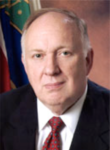
Like each of its post-Cold War predecessors, the Trump administration has reviewed its policies and posture with respect to nuclear weapons. The result is a mixture of continuity and change, with the change reflecting a re-focus from the long-range hopeful vision of the early Obama administration to a more somber assessment of near-term threats.
This presentation will discuss what is new in the document, the significance of the changes and the additional policy and technical
challenges resulting from the international developments to which the administration is responding. It will focus on the areas that have been most contentious and examine the validity of the concerns raised.
Ambassador Brooks served from July 2002 to January 2007 as Administrator of the U.S. Department of Energy’s National Nuclear Security Administration, responsible for the U.S. nuclear weapons program and for the Department of Energy’s international nuclear nonproliferation programs. In the early 1990s, he served as Chief U.S. Negotiator for the first Strategic Arms Reduction Treaty. Ambassador Brooks has over five decades of experience in national security, much of it associated with nuclear weapons, including service as Assistant Director of the Arms Control and Disarmament Agency, Director of Defense Programs and Arms Control on the National Security Council staff and a number of Navy and Defense Department assignments. As a Navy submarine officer, he served on four nuclear-weapons capable ships. Ambassador Brooks is now an independent consultant on national security, a Senior Advisor at the Center for Strategic and International Studies, a Distinguished Research Fellow at the National Defense University, a member of the National Academy of Sciences Committee on International Security and Arms Control and of the Board of Managers supervising Sandia National Laboratories the State Department International Security Advisory Board and an advisor to five other Department of Energy national laboratories.
Corresponding document available here.
Dealing with Secrecy, Trust and Access in Nuclear Weapons Verification
Sébastien Philippe
February 14, 2018 at 1:00 pm – 2:00 pm
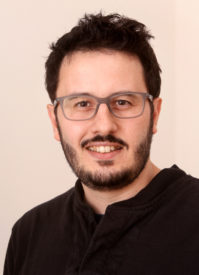
Future nuclear arms-control agreements could place numerical limits on the total number of warheads in the arsenals of the weapon states. Verifying these agreements would face at least two fundamentally new challenges. First, inspectors would have to confirm that the number of declared items does not exceed the agreed limit; and, second, inspectors would also have to confirm the authenticity of nuclear warheads prior to dismantlement. Both tasks may involve procedures that put at risk classified or otherwise sensitive information and require access to sensitive facilities. A viable verification regime needs to protect this information and possibly limit access to these facilities while providing inspectors the ability to acquire data they can trust. This presentation reviews the emerging challenges for nuclear verification and proposes technical approaches to address them building on new applications of cryptography and information security.
Sébastien Philippe is a doctoral candidate in applied physics at Princeton University’s Department of Mechanical and Aerospace Engineering. His research focuses on innovative verification approaches and technologies to support future international treaties, with a focus on nuclear non-proliferation, arms control and disarmament. As part of his Princeton dissertation, he has designed and carried out successfully the first experimental demonstration of a physical application of the cryptographic concept of zero-knowledge proofs.
Sébastien is a member of Princeton’s Nuclear Futures Laboratory and affiliated with the Program on Science and Global Security at the Woodrow Wilson School of Public and International Affairs. He is also an editorial assistant of the peer-reviewed journal Science & Global Security. Before joining Princeton, Sébastien was a graduate research fellow at the French war college and a nuclear safety engineer for strategic nuclear forces within the French defense procurement agency. He holds a MSc from France’s National Institute of Applied Sciences in Lyon (2010) and a MA from Princeton University (2014).
Is Nuclear Arms Control Dead?
Professor Michael Nacht, UCB
November 13th, 2017
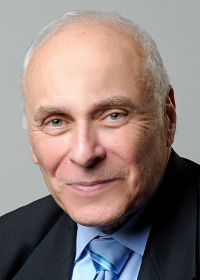
The tense international environment with poor U.S.- Russia relations, and great tensions in US-North Korea and US-Iran relations, has called into question whether negotiated nuclear arms control agreements have any future. If not, what does this portend for nuclear weapons proliferation and even nuclear weapon use.
Michael Nacht holds the Thomas and Alison Schneider Chair in Public Policy. From 1998-2008 he was Aaron Wildavsky Dean of the Goldman School. He is a specialist in U.S. national security policy; science, technology and public policy; and management strategies for complex organizations.
Nacht served as Assistant Secretary of Defense for Global Strategic Affairs (2009-2010), after unanimous U.S. Senate confirmation, for which he received the Distinguished Public Service Award, the Department’s highest civilian honor. Previously, he was Assistant Director for Strategic and Eurasian Affairs of the U.S. Arms Control and Disarmament Agency (1994-97), during which time he participated in five Presidential summits, four with Russian President Yeltsin and one with Chinese President Jiang Zemin.
He is currently chair of the Policy Focus Area for the Nuclear Science and Security Consortium led by the U.C. Berkeley Department of Nuclear Engineering. He is also co-investigator of a new Department of Defense Minerva Research Project on “Deterring Complex Threats” with colleagues from UC San Diego.
He received a B.S. in Aeronautics and Astronautics and an M.S. in Operations Research from New York University and a Ph.D. in Political Science from Columbia University.
Nondestructive Assay for International Safeguards
Dr. Alexis Trahan, LANL
October 23rd, 2017
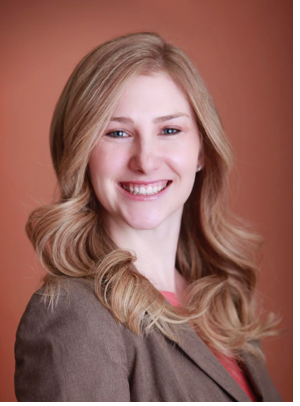
From the Atoms for Peace speech in 1953 to the JCPOA (Iran Deal) in 2015, nuclear nonproliferation has been crucial to maintaining peace throughout the world. International Safeguards is the system of inspection and verification that the International Atomic Energy Agency (IAEA) uses to maintain that peace and prevent weapon proliferation. We will discuss safeguards and how it fits into the IAEA’s mission, with an emphasis on special nuclear material nondestructive assay (NDA) methods. The science of NDA will be discussed followed by an overview of selected technologies employed by the IAEA. Finally, we will go over NDA of spent nuclear fuel, discussing currently employed techniques and research in the area taking place at LANL.
Alexis Trahan is a nuclear engineer with the Los Alamos National Laboratory (LANL) Safeguards Science and Technology group, NEN-1. She received her B.S. in nuclear engineering from UC Berkeley in 2011 and her M.S. from the University of Michigan in 2012. In 2014, Dr. Trahan was awarded the University of Michigan Towner Prize for Outstanding Ph.D. Research for her thesis on development of a spent fuel nondestructive assay instrument for IAEA nuclear safeguards, and she completed her Ph.D. in 2016. Dr. Trahan is currently developing and testing neutron timing-based technologies for used power reactor and research reactor fuel characterization.
Potential of Cognitive Computing for National Security Missions
Dr. David R. Farley, SNL
September 25th, 2017
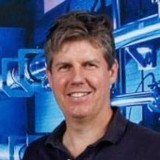
There has been substantial progress in machine learning, cognitive computing and other data analytics flavors. Decision makers, nuclear power plant operators, intelligence analysts and other high-consequence industries seek to understand the potential impact of these new computer-enhanced analytic tools. IBM’s Watson cognitive computing platform enables users to ask natural language questions and evaluate hypotheses along with supporting evidence in the form of specific passages from a vast corpus of changing knowledge. Watson currently supports evidence discovery for agencies in the Federal Government and has made significant strides in various industries, such as indications analysis for diagnosing diseases in the healthcare industry. But do platforms like Watson deliver for national security missions, and how do we assess this? In this presentation, an overview of the national lab work on using Watson is detailed, as well as potential paths forward.
Dr. David R. Farley is a Principal Member of the Technical Staff in the Remote Sensing department at Sandia National Laboratories in Livermore, California. He received his Ph.D. in Engineering Physics from UCSD in 1996 with an emphasis in spectroscopy and quantum mechanics. David did his postdoc at Lawrence Livermore National Laboratory (LLNL) in the weapons group, utilizing the NOVA laser system to study fluid interface mixing. Thereafter, he spent a decade working in the fission industry initiating and managing energy projects around the world. David returned to more basic research in 2009 at the Princeton Plasma Physics Laboratory (PPPL) working on the Princeton Field-Reversed Confinement (FRC) fusion device, and then returned to LLNL to be a shot physicist at the National Ignition Facility (NIF) during the National Ignition Campaign (NIC). While at LLNL, David became involved in nonproliferation and safeguards work at Z-Division, leveraging his years on the ground for the nuclear industry, and since 2014 continues his nonproliferation and safeguards work at Sandia.
Improving beta-decay studies for fundamental science and applications
Dr. Nicholas Scielzo
April 13th, 2017
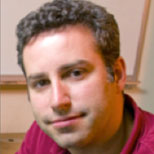
Recent advances in radioactive-ion beams and ion-trapping techniques are opening up new opportunities for improved studies of the neutrinos and neutrons emitted in nuclear beta decay. A novel ion-trap system has been developed to address fundamental questions ranging from electroweak theory to the origin of the elements and to provide nuclear data for nuclear-energy and stockpile-stewardship applications. When a radioactive ion decays in the trap, the recoil-daughter nucleus and emitted particles emerge from the trap volume with negligible scattering and propagate unobstructed through vacuum. This allows the momentum and energy of particles that would otherwise be difficult (or even impossible) to detect to be reconstructed from the momentum imparted to the recoiling nucleus. Beta-delayed neutron spectroscopy can be performed by circumventing the difficulties associated with direct neutron detection and instead reconstructing the neutron emission probabilities and energy spectra from the time of flight of the recoiling nuclei. In addition, a determination of the direction and energy of each emitted neutrino in the decays of 8Li and 8B has been performed to search for new particles and interactions. Recent results from decay studies using the Beta-decay Paul Trap (BPT) at Argonne National Laboratory will be presented and future prospects for these approaches will be discussed.
Dr. Nicholas Scielzo is currently a Deputy Group Leader for the Nuclear Particle Physics Group within the Nuclear and Chemical Sciences Division at LLNL. He earned a BA in chemistry and physics from Harvard University in 1997 and a PhD in physics from the University of California at Berkeley in 2003. He arrived at LLNL in 2006 as a Lawrence Fellow after spending 3 years at Argonne National Laboratory developing novel techniques to test the Standard Model of particle physics using short-lived radioactive nuclei. At LLNL, he has established a multi-faceted beta-decay spectroscopy program that uses ion traps, radioactive beams, and an assortment of specialized radiation detectors to perform neutrino and neutron spectroscopy to test the electroweak interaction, improve our understanding of heavy-element nucleosynthesis, and provide high-quality nuclear data for stockpile-stewardship and reactor-modeling applications. He has also developed new techniques to search for neutrinoless double-beta decay and to determine reaction cross sections on radioactive isotopes. In the last several years he has served as the primary advisor for 4 graduate students who received their PhD from the University of California at Berkeley.
Spatially Resolved Uranium Speciation in Nuclear Materials by Scanning Transmission X-ray Microscopy
Dr. David Shuh
February 28th, 2017
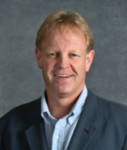
The production and manipulation of nuclear material can leave distinct physical and chemical signatures, which can later be characterized to provide evidence of the origin and process history of an unidentified specimen, a field known as ‘nuclear forensics’. A broad variety of analytical chemistry techniques can provide information about interdicted and post-detonation materials. Here, we present the results of several research studies of uranium-bearing forensic specimens by soft X-ray scanning transmission X-ray microscopy (STXM). STXM yields X-ray absorption spectroscopy data with 25-nm or better spatial resolution, making it possible to quantitatively evaluate variations in oxidation state and other chemical properties across a heterogeneous specimen. Operating in the soft X-ray regime provides access to the NIV,V edges of the actinides and the oxygen K edge, which is highly sensitive to variations in U-O bonding, and consequently carries unique fingerprints of uranium oxides and their hydrates. Thus, this approach makes it possible to evaluate the oxidation state and the heterogeneity of nuclear forensic samples, yielding information on formation or process history, and/or past storage conditions. In studies of U-bearing glassy materials, the L edges of some transition metals (particularly iron, which influences the redox behavior of uranium) can provide additional insights. Technical developments in STXM operations relevant to forensics are also summarized. In particular, we report on improvements in sample preparation and rapid data analysis methods implemented in STXM experiments at Beamline 11.0.2 of the Advanced Light Source. LLNL-ABS-690941
Dr. David Shuh is a senior scientist in the Heavy Element Chemistry Group of the Chemical Sciences Division and the Director of the Glenn T. Seaborg Center at LBNL. Dr. Shuh’s research focuses comprehensively on the science of the f-elements, in particular the actinide elements with an emphasis on the transuranic elements (e.g., neptunium, plutonium, americium, curium). He is a world-renowned expert in the development of large-scale synchrotron radiation instrumentation and techniques to explore the fundamental chemistry and physics of f-electron materials. His current interests focus on determining the electronic structure and coordination chemistry of f-electron and novel materials to understand their physical and chemical behavior.
Compact quasi-monoenergetic photon applications and sources for nuclear applications
Dr. Cameron Geddes
January 24, 2017
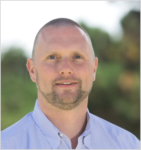
Near-monoenergetic photon sources at MeV energies offer improved sensitivity at reduced dose for nuclear nonproliferation and related applications. Assessments of application-specific benefit from mono energetic photons will be described, including for cargo screening, active interrogation, treaty verification, nondestructive assay, and emergency response. Thomson (also referred to as Compton) scattering sources are an established method to produce appropriate photon beams. Applications are however restricted by the size of the required high-energy electron accelerator, scattering (photon production) system, and shielding for disposal of the high-energy electron beam. Laser-plasma accelerators (LPAs) produce GeV electron beams in centimeters, using the plasma wave driven by the radiation pressure of an intense laser. Designs, and development of an experimental facility to demonstrate a compact photon source using such accelerators will be described, together with the path to a application-relevant photon source system.
Dr. Geddes is a staff scientist in the BELLA center of Lawrence Berkeley National Laboratory, investigating use of laser driven plasma waves to build compact next generation particle accelerators and photon sources. These accelerators sustain much higher accelerating fields than conventional devices, allowing compact machines. His current project is developing compact sources of near-monochromatic MeV photons for nuclear material detection and characterization
Cryogenic Gamma-ray detectors with Ultra-High Energy Resolution
Stephan Friedrich
December 1, 2016
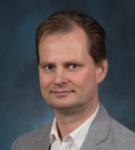
Magnetic microcalorimeter (MMCs) gamma-ray detectors with operating temperatures below 50 mK offer an order of magnitude higher energy resolution than semiconducting Ge and Si detectors. They are based on measuring the change in magnetization after gamma absorption increases the detector temperature. MMCs can have an energy resolution <50 eV at 60 keV, and therefore detect isotopes whose gamma emissions are obscured by line overlap in conventional Ge detectors. The high energy resolution can greatly improve the accuracy of non-destructive analysis of nuclear materials, both in fundamental science and nuclear safeguards applications. We are currently developing arrays of MMC detectors to increase the detector sensitivity. We are also building refrigerators to make operating temperatures of 15 mK accessible fully automated and without the use of cryogenic liquids. This talk discusses the design and performance of MMC gamma detectors at LLNL, and outlines experiments that can serve as thesis project for graduate students who are interested in ultra-high resolution detector development.
Stephan Friedrich received his Ph.D. in Applied Physics from Yale University in 1997 with a dissertation on superconducting tunnel junction X-ray detectors for high-energy astrophysics. He then adapted these detectors for operation at the ALS synchrotron at the Lawrence Berkeley National Lab for biophysics and material science experiments. Since 2002, Dr. Friedrich has led the cryogenic detector group at Lawrence Livermore National Lab, developing ultra-high resolution X-ray and gamma-ray detectors for basic science and national security applications. He has supervised several graduate students who have written their theses on cryogenic detector development and the experiments they enable.
Nuclear Security Programs at Sandia National Laboratories
Sheryl Hingorani
November 7, 2016

Sheryl Hingorani will describe a variety of Nuclear Security Programs underway at Sandia National Laboratories in Livermore, CA. Sheryl will also discuss opportunities for possible student intern placements.
Sheryl Hingorani leads Sandia’s Systems Analysis and Engineering organization in Livermore, California. Ms. Hingorani started her career at Sandia in 1986, as a mechanical design engineer, and has spent most of her career working in a variety of positions in Sandia’s Nuclear Weapons program, including as Sandia’s Nuclear Weapons Chief of Staff, and as Chair of the independent Red Team for the Annual Assessment of the state of health of the U.S. nuclear stockpile. Ms. Hingorani received a special appointment to Distinguished Member of Technical Staff at Sandia in 1998, and moved into management in 2004. She completed studies as a Fellow with the Massachusetts Institute of Technology Center for International Studies, and was the recipient of the Leadership Foundation Fellowship from the International Women’s Forum. Between 2000 and 2005, Ms. Hingorani was the Executive Director of the Albuquerque Committee on Foreign Relations; she also served as Secretary for the American Committees on Foreign Relations for two years. Ms. Hingorani is a Laboratory Advisor to the Defense Science Board Special Task Force on Weapons of Mass Destruction, and is a Laboratory Affiliate to the California Council on Science and Technology. She is member of the Society of Women Engineers.
